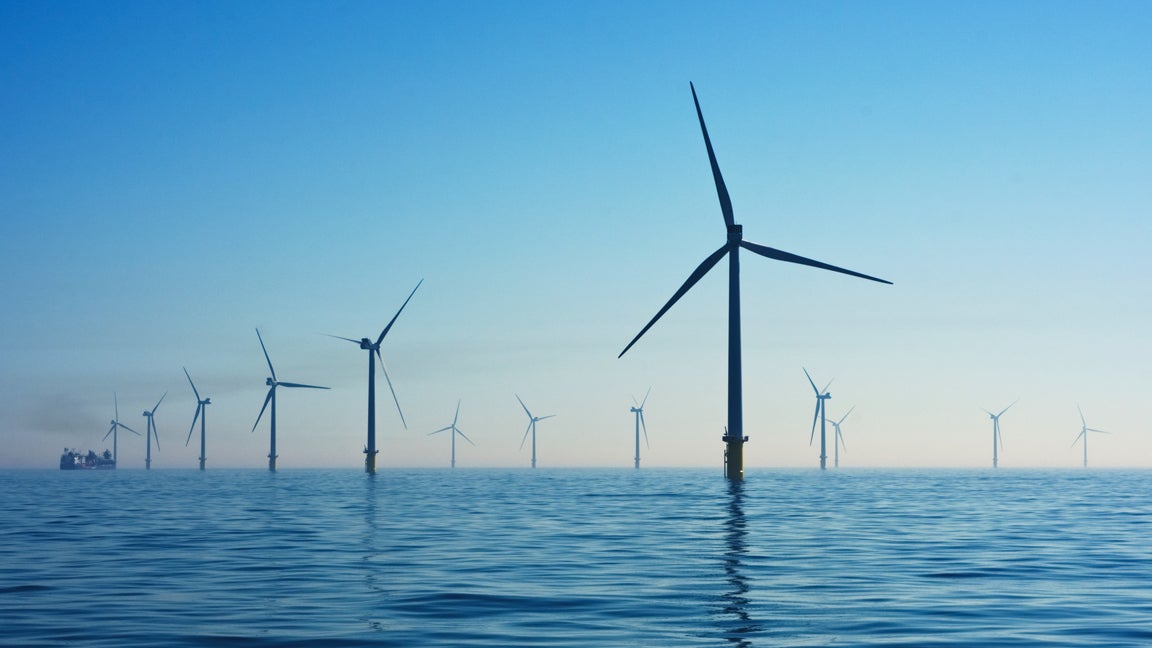Delaware
Elijah Howard rushes for 257 yards and a TD to help Central Connecticut beat Delaware State 51-44

NEW BRITAIN, Conn. (AP) — Elijah Howard rushed for 257 yards and a touchdown, quarterback Ricky Ortega added 78 yards and three rushing scores, and Central Connecticut beat Delaware State 51-44 on Saturday.
Central Connecticut totaled 498 yards on the ground with five touchdowns. Malik Thomas rushed for 113 yards on just 10 carries, including a 53-yarder for a 27-26 lead. Howard’s long was for 80 yards to give CCSU a 41-33 advantage.
Ortega’s 13-yard keeper broke a tie at 41-all with 5:02 left in the fourth quarter. After Kimal Clark made an interception for the CCSU defense, Jake Barnum kicked a 34-yard field goal for a 10-point lead with 1:55 left.
Ortega and Matt Jenner combined for 9-of-19 passing for 86 yards and two scores for Central Connecticut (2-3). Paul Marsh Jr. and Isiah Williams each caught a touchdown pass from Jenner.
Marqui Adams threw for 301 yards and three touchdowns for Delaware State (1-5). Adams added 46 yards rushing and a score. But he also threw two interceptions. NyGhee Lolley and EJ Core each had 80-plus yards receiving with a touchdown.
The teams combined for six touchdowns and 40 points in the opening 11 minutes of the second half. Twenty-seven points came from Delaware State, highlighted by Wade Inge’s 85-yard punt return and Rahkeem Smith’s 96-yard kickoff return.
___
AP college football: https://apnews.com/hub/college-football and https://apnews.com/hub/ap-top-25-college-football-poll

Delaware
Light snow to fall in parts of Del., NJ, Philly region on Saturday

We’re in for another round of snow in the Philadelphia region this weekend though much less than what we saw on Monday. Here’s what you need to know.
Cold temperatures continue
We’ll stay dry through the rest of the week, but the cold weather lingers. Gusty winds from Wednesday and Thursday will finally ease as high pressure builds into the area on Friday. Temperatures will nudge upward to 36° by Friday afternoon, though that’s still below the normal high of 42°.
Light snow in Philly region Saturday morning
As we head into the weekend, our stretch of dry days comes to an end. Clouds will increase late Friday ahead of a weak system. Early Saturday morning, with temperatures in the 20s, this system is expected to bring light snow to all of our neighborhoods. The snowfall will be brief and minimal, exiting by late Saturday morning, followed by clearing skies in the afternoon.
How much snow will fall on Saturday?
Thanks to dry air and limited moisture, snowfall amounts will be light—most areas will see an inch or less. However, parts of Delaware and South Jersey, closer to the system’s southern track, may pick up 1–2 inches. These are early estimates, but all signs point to a minimal event, far less impactful than last Monday’s storm. Saturday afternoon will feature sunshine but stay cold, with highs in the mid-30s.
What’s the forecast for the Eagles wild card game?
Sunday remains clear and cold, with highs around 37°. For the Eagles game at 4:30 p.m., temperatures will start in the upper 30s and drop to the lower 30s by the fourth quarter under clear skies. Go Eagles!
Download the NBC10 app and follow the NBC10 First Alert Weather Team to get the latest weather updates.
Delaware
President Biden moves to protect oceans from offshore drilling. Here’s what that means

Delaware dealing with first significant snowfall of 2025
Parts of Delaware could see as much as 10 inches of snow due to storm passing through the area on Monday. 1/6/25
President Joe Biden has permanently banned offshore drilling along a majority of America’s coastline, including off the coast of Delaware.
The ban does not have an expiration date, although the move is considered largely symbolic. The decision removes the possibility that areas off the Atlantic, Pacific and the east Gulf Coast will being surveyed for oil and gas drilling.
During the earlier years of the previous Trump administration, Delaware’s Governor John Carney found himself, along with other coastal lawmakers, at the frontlines of a fight to protect the Atlantic shores from offshore drilling operations.
Biden’s move cannot be reversed by future presidents, but there are ways that future governments can push against it.
Here are the details.
What do the protections mean?
On Monday, Jan. 6, President Biden published a statement that permanently banned offshore oil and natural gas drilling off of the East Coast, West Coast, the eastern Gulf of Mexico and Alaska’s Northern Bering Sea.
“My decision reflects what coastal communities, businesses and beachgoers have known for a long time: that drilling off these coasts could cause irreversible damage to places we hold dear and is unnecessary to meet our nation’s energy needs,” Biden said in his statement.
Combined, 625 million acres of ocean are now permanently withdrawn from lease option from private companies looking to drill for oil and natural gas.
President Biden invoked his authority spelled out in the Outer Continental Shelf Lands Act, which has been used by the previous three presidential administrations to either temporarily or permanently protect areas of the ocean from being used for offshore drilling.
Most recently, this particular section of the law was used by President Trump leading up to the 2020 election to temporarily protect the coasts of Florida and North Carolina. The protections for these areas were set to expire in 2032.
In July 2024, the Coastal Business Alliance, which represents over 55,000 coastal businesses along the United States’ coastlines, sent a letter to the Biden Administration requesting the President to enact permanent protections for these areas.
“Our members understand that dirty and dangerous offshore drilling directly threatens the marine ecosystems we rely on; that same drilling also worsens climate change which brings growing risks to the health and livelihoods of our communities every year,” the letter said.
Coastal businesses and defense specialists have advocated for the protection of more ocean areas, citing that the GDP of coastal economies is inextricable linked with a healthy ocean and coastline.
How far do protections go?
Although they are permanent, there are some restrictions to the decision from the Biden Administration.
The protections do not apply to areas already under lease for drilling, most of which are located on the west Gulf of Mexico (not included in this decision).
It also does not apply to other construction activities that may involve drilling, such as offshore wind projects which require horizontal drilling to connect cables from the ocean to shore.
President-elect Trump has already said he will reverse Biden’s protections “immediately,” although it may not be that simple.
While in office, President Trump attempted to remove similar permanent protections that were set in place by the Obama administration, but this was overruled by a judge who ruled that only an act of Congress can overrule these decisions.
What does it mean for Delaware?
No lease agreements were active in Delaware leading up to President Biden’s decision, but there have been close calls in recent years that have sparked Delaware lawmakers to be proactive.
Between 2017 and 2018, the Trump administration announced that they would revisit offshore drilling restrictions, including off of the Atlantic coast. This prompted Governor John Carney to speak out against drilling in the Atlantic and to meet with former Secretary of the Interior Ryan Zinke to discuss the administration’s offshore drilling plan.
“The health of Delaware’s economy and environment are directly tied to the health of the state’s coastal areas,” said Carney in 2018. “I cannot accept the tremendous risks associated with opening vast areas in the Atlantic to drilling.”
Two senate bills were also passed in 2018 to prohibit oil and natural gas drilling in Delaware’s coastal zones and territorial waters.
The Trump administration previously authorized private companies to use seismic airgun surveys to test for the prevalence of oil and gas under the continental shelf. After which, Delaware signed onto a legal complaint against the federal government.
Environmentalists in particular have hailed President Biden’s decision as a victory for protecting the sanctity of the oceans and coasts.
“Our coastlines are home to millions of Americans and support billions of dollars of economic activity that depend on a clean coast, abundant wildlife and thriving fisheries,” said Oceana Campaign Director Joseph Gordon. “Our treasured coastal communities are now safeguarded for future generations.”
Molly McVety covers community and environmental issues around Delaware. Contact her at mmcvety@delawareonline.com. Follow her on Twitter @mollymcvety.
Delaware
Delaware inks deal with US Wind for $128M in benefits and lease payments

This story is part of the WHYY News Climate Desk, bringing you news and solutions for our changing region.
From the Poconos to the Jersey Shore to the mouth of the Delaware Bay, what do you want to know about climate change? What would you like us to cover? Get in touch.
Delaware signed an agreement this week with the offshore wind energy company US Wind worth about $128 million, which includes lease payments, community benefits, upgrades to the state’s grid and renewable energy credits. The deal is in exchange for infrastructure needed to transport the energy onshore through Delaware waters and state park land.
The company plans two projects off the Delmarva Peninsula that will provide Maryland ratepayers with renewable energy. The first of which, dubbed MarWin, would construct 21 turbines to generate 300 megawatts of electricity, enough to power 92,000 homes. The second, Momentum Wind, would include an additional 55 turbines churning out 800 megawatts of power, enough to light up 250,000 homes.
The company has leased about 80,000 acres in federal waters off Ocean City, Maryland. If fully developed, it says the site could generate close to two gigawatts of wind energy, or enough to power 600,000 to 700,000 homes. The deal with Delaware comes after the final permits from the Department of Interior were granted to the projects in December and a year after the state began negotiating with the company.
“With the recent federal and state project approvals, we are ready to reap the environmental, health, workforce, energy cost and community benefits from this needed transition to renewable energy,” said then-Gov. John Carney in a statement on Monday, his last day in office. “Delawareans will benefit in numerous ways from this important agreement.”
While the contract for the offshore wind energy is with the state of Maryland, the project plans to plug into the grid at the Indian River Power plant, a former coal burning station, in Dagsboro, Sussex County, Delaware. Underground cables would connect the turbines beneath Delaware state waters and wetlands, including Indian River Bay and 3R’s Beach at Delaware Seashore State Park.
-

 Business1 week ago
Business1 week agoThese are the top 7 issues facing the struggling restaurant industry in 2025
-

 Culture1 week ago
Culture1 week agoThe 25 worst losses in college football history, including Baylor’s 2024 entry at Colorado
-

 Sports1 week ago
Sports1 week agoThe top out-of-contract players available as free transfers: Kimmich, De Bruyne, Van Dijk…
-

 Politics6 days ago
Politics6 days agoNew Orleans attacker had 'remote detonator' for explosives in French Quarter, Biden says
-

 Politics6 days ago
Politics6 days agoCarter's judicial picks reshaped the federal bench across the country
-

 Politics4 days ago
Politics4 days agoWho Are the Recipients of the Presidential Medal of Freedom?
-

 Health3 days ago
Health3 days agoOzempic ‘microdosing’ is the new weight-loss trend: Should you try it?
-

 World1 week ago
World1 week agoIvory Coast says French troops to leave country after decades

















